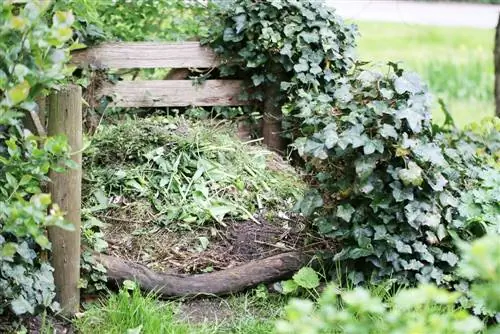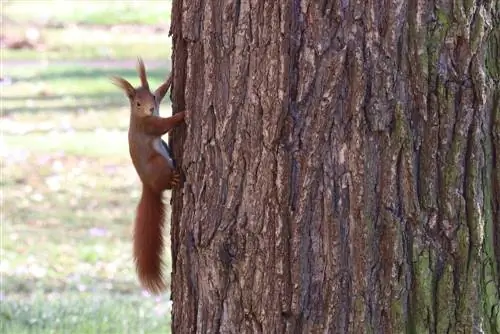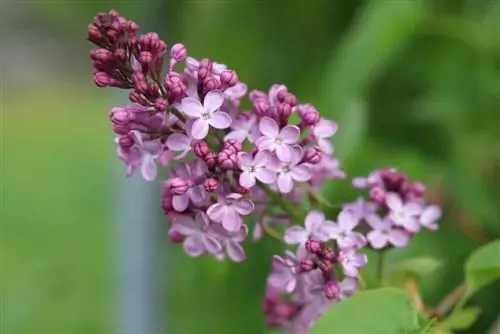- Author admin [email protected].
- Public 2023-12-17 03:39.
- Last modified 2025-01-24 12:45.
Making good compost for the garden is almost like a science in itself. Proper compost management ensures that the waste rots properly and becomes nutrient-rich soil. An important part of compost management is selecting the right compost material. What belongs in the compost and what doesn't is available in a free PDF list that can be hung next to the compost site.
Layering
As a rule, everything that comes from the garden can go straight back into the compost. This applies especially to the weeds that are weeded out. But dead plant material is also ideal for compost. Above all, the mixture of fresh and dead material ensures a balanced compost and also promotes rapid rotting.
The ideal layering looks like this:
- Garden waste
- small cut branches
- Garden soil
The three layers alternate evenly until the compost heap has reached the desired height. Finally, add a thick layer of garden soil on top. This ensures closure and prevents the compost from drying out. This would slow down composting. Once the compost heap is complete, no more new material should be added to it.
Garden waste
Gardening produces a lot of compostable material. However, not every material can be placed on it without hesitation. Weeded plants should have as little soil as possible at the roots. If branches are added to the compost heap, they should be shredded. This also applies to coarse material such as cabbage stalks. Smaller material composts more quickly and when the pile is opened, coarse plant parts do not have to be laboriously sorted out.
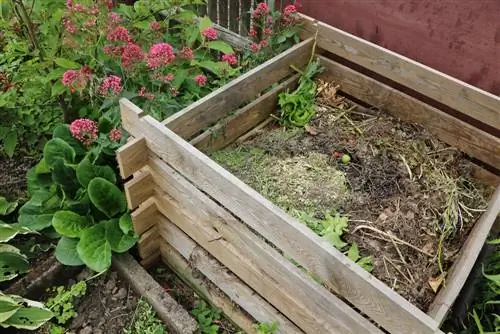
Caution is advised when cutting grass. This should only be added to the compost gradually. If the turf layer is too thick, it will not compost but rather ferment. Although this does not harm the microorganisms, it is not the goal of composting. During fermentation, the material is primarily liquefied rather than converted into soil. Lawn clippings should therefore only be added to the compost heap in small quantities or when they are slightly wilted.
Tip:
Lawn clippings are very suitable for mulching and therefore do not necessarily have to go into the compost.
Leaves can also become problematic in the compost. Leaves that are difficult to rot, such as those from walnut trees, in particular, should only be added to the compost in small quantities. However, some garden plants, such as the hydrangea, love compost from leaves. If there are many deciduous trees in the garden, it is a good idea to create your own compost heap for the leaves in order to feed those plants that like acidic soil.
No diseased plant parts
Parts of plants that need to be removed due to pests or diseases should never be placed in the compost. Composting does not destroy pests, pathogens or fungi. They get back to the plants through the compost soil and can trigger a new infestation.
Such plant parts are sorted out and disposed of in the residual waste. This is burned, preventing it from spreading. Diseased parts of plants should not be placed in organic waste, as this will also be composted and pests and diseases may then find their way back into the garden via plant soil.
Leftovers
Food leftovers in the compost are a sensitive issue. They can attract unwanted visitors such as rats. Therefore, when it comes to food leftovers, it is not only important to differentiate between which leftovers they are, but also to throw them sparingly into the compost. Eggshells or bread can be composted without any concerns. Leftover salad or cooked vegetables are also suitable for compost. To a limited extent, pasta can also be composted. What definitely doesn't belong in the compost are meat or bone remains. These are guaranteed to attract rats, who then often even create their homes in the compost.
Purchased plants
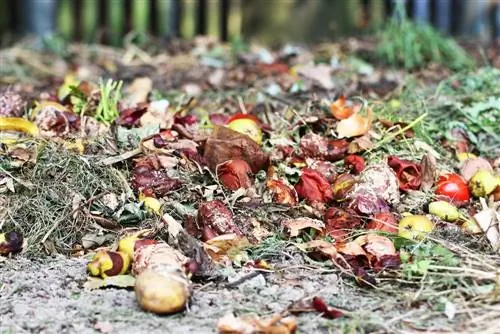
Dried cut flowers, potted plants that have died quickly, they often end up in the compost. They are not a problem as long as they are organic plants. Conventional cut flowers or potted plants are often contaminated with pesticides and should therefore be disposed of better.
Animal litter
When it comes to animal litter, opinions differ as to whether it belongs in the compost. Basically, faeces, whether from animals or humans, have no place in the compost. However, small animal litter can be used to a limited extent. The following animal litter is compostable:
- backed paper
- Sawdust
- Straw/Hay
- Wood chips
Animal litter in the form of granules should never be placed in the compost heap. This is not biological material that composts quickly. In addition, these granules are often treated with chemicals to bind the smell. For he alth reasons, no feces from dogs or cats should be added to the compost. Both animals can act as intermediate hosts for diseases, which in turn can be transmitted to humans.
Good mix
Especially with material that should only go into the compost to a limited extent, it is important to mix it with safe material. However, since suitable material is not always available or a certain material is only produced selectively, it is often not enough to just create a compost heap. This means that even larger quantities of difficult materials can be composted. Material such as eggshells or branches or leaves can also be collected in advance and then mixed into the compost when it is needed. Branches and leaves in particular should be collected separately, as they ensure that the pile remains loose and is ventilated.
Compost acceleration material
So that the compost develops well or the process is even accelerated, different materials can be added. For example, yeast water with sugar can be used as a compost starter. This means that useful fungi get into the compost material. Stone dust also helps with composting and later ensures a balanced ratio of minerals. The rock dust also binds unpleasant odors. Herbs can also have a positive effect on the quality of the compost. However, what many consider weeds provides an additional boost of nutrients when composted. Ideal herbs for compost are:
- Stinging Nettle
- Comfrey
- Yarrow
- Horsetail
The herbs are roughly chopped and added to the compost in layers.

